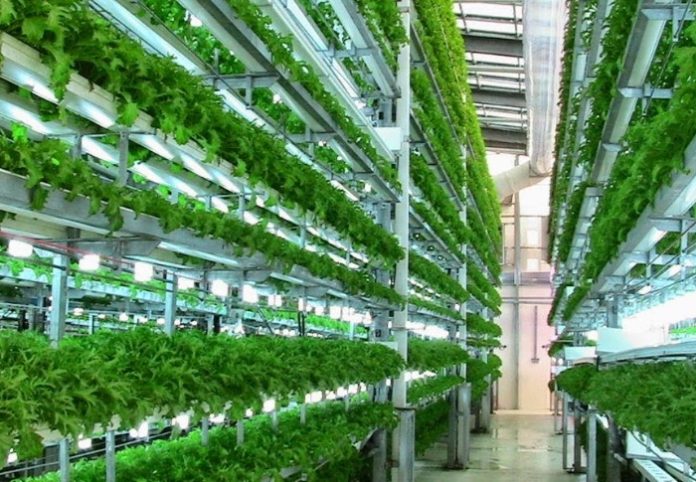
Vertical farming, the practice of cultivating crops in stacked layers or vertically inclined surfaces, is not merely a product of modern agricultural ingenuity. Instead, it reflects centuries of innovation, adaptation, and the human desire to overcome environmental and spatial constraints. This article explores the rich history of vertical farming, from ancient engineering marvels to contemporary urban farming techniques.
The Roots of Vertical Farming: Ancient Marvels and Early Innovations
The concept of growing plants in layered or unconventional arrangements traces back to some of humanity’s earliest civilizations:
600 BC – The Hanging Gardens of Babylon: Often hailed as one of the Seven Wonders of the Ancient World, these terraced gardens were a testament to advanced engineering and agricultural techniques. Built by King Nebuchadnezzar II, the gardens featured vaulted terraces stacked one above another, planted with trees, flowers, and shrubs. Ingenious irrigation systems, likely chain pumps, transported water from the Euphrates River to the highest terraces, allowing vegetation to flourish in an arid environment.
1150 AD – Aztec Chinampas: The Aztecs devised floating gardens, or chinampas, as a solution to the swampy, agriculturally unsuitable areas near lakes. Constructed from reeds and soil, these floating rafts provided fertile ground for crops, while the roots extended into nutrient-rich lake waters. This method combined space efficiency with sustainable resource use, embodying principles echoed in today’s hydroponic systems.
1627 – Bacon’s Hydroponic Foundations: In his book Sylva Sylvarum, Sir Francis Bacon explored the idea of growing plants without soil. His theories laid the groundwork for hydroponic gardening, demonstrating that soil was not indispensable for plant cultivation.
Twentieth Century: Laying the Groundwork for Modern Vertical Farming
As the world industrialized, vertical farming concepts began to crystallize, blending scientific exploration with architectural imagination.
1909 – Vertical Skyscraper Farms in Life Magazine: A.B. Walker envisioned vertically stacked homes with integrated farming, combining urban living with agricultural self-sufficiency. This idea influenced later architects and urban planners.
1915 – The Term ‘Vertical Farming’ is Coined: Geologist Gilbert Ellis Bailey introduced the term in his book but used it in the context of farming deeper into the soil. While unrelated to today’s vertical farming, his unconventional interpretation underscored the quest for maximizing arable land.
1940 – Hydroponics in War: During World War II, hydroponic systems were employed on South Pacific islands to feed Allied troops. This large-scale implementation demonstrated hydroponics’ potential for sustaining populations under challenging conditions.
1964 – Vienna’s Glass Tower Farm: The International Horticulture Exhibition featured a vertical farm prototype, marking one of the earliest public displays of such a concept.
1989 – Kenneth Yeang’s Vegetated Architecture: Architect and ecologist Kenneth Yeang proposed integrating green spaces into urban buildings. His vision emphasized small-scale, community-focused vertical farming, contrasting with the industrial approach gaining traction elsewhere.
Modern Vertical Farming: A New Era of Innovation
The late 20th and early 21st centuries saw the conceptual and technological maturation of vertical farming:
1999 – The Despommier Model: Dr. Dickson Despommier and his students at Columbia University proposed vertical farming towers as a solution to urban food security. They envisioned skyscrapers with multiple layers of crops, relying on advanced technologies for artificial lighting, climate control, and nutrient recycling. His 2010 book, The Vertical Farm: Feeding the World in the 21st Century, solidified his position as a leading advocate of this method.
Key Developments Since 1999
The turn of the millennium marked a new chapter for vertical farming, powered by technological advancements and a global focus on sustainability:
Dr. Despommier’s Influence and Initial Projects (2000s): Dr. Dickson Despommier’s vision of skyscraper farms gained attention in academic and urban planning circles, with initial pilot projects focusing on urban food production and resource efficiency.
Commercial Vertical Farms (2010–2015): Companies like AeroFarms (USA) and Spread (Japan) pioneered large-scale indoor vertical farming. Spread’s “Kameoka Plant” (2013) became a benchmark with its automated, scalable production model. AeroFarms, established in 2004, achieved global recognition with its high-yield, soil-free vertical farming systems designed to maximize space and resource efficiency.
Technological Breakthroughs in Lighting and Automation (2015–2020): LED lighting revolutionized vertical farming by providing plants with optimal light spectrums for photosynthesis while reducing energy consumption. Automation, robotics, and IoT-enabled systems began to manage environmental factors, monitor crop health, and optimize water and nutrient use.
Container Farming Movement (2010s): Freight Farms and Square Roots transformed shipping containers into portable vertical farms. These modular systems allowed communities, businesses, and individuals to grow food locally, reducing the carbon footprint associated with transportation.
Smart Farming and AI Integration (2020s): AI-powered solutions have improved crop management by predicting yields, detecting diseases, and optimizing growing conditions.
Companies like Infarm (Germany) use cloud-based platforms for real-time monitoring and decentralized farming networks in urban centers.
Biophilic Urban Spaces (2020–Present): Architects have integrated vertical farming into high-rise buildings, blending agriculture with urban living. Examples include Singapore’s Sky Greens (2012), the world’s first rotating vertical farm, and Milan’s Bosco Verticale (2014), a residential tower featuring vertical gardens.
Despite its ancient roots, vertical farming has gained significant attention only in the last decade, fueled by urbanization, climate change, and the need for sustainable food systems. Countries like Japan, the United States, and the Netherlands have adopted vertical farming on a large scale, producing leafy greens, strawberries, and herbs in controlled environments. India, though a late entrant, has made strides in cultivating hydroponic fodder and vegetables.
The evolution of vertical farming highlights humanity’s ingenuity in addressing food security challenges. From the Hanging Gardens of Babylon to modern-day skyscraper farms, this journey reflects our enduring commitment to innovation, sustainability, and the vision of a greener future. As technology advances and resources become scarcer, vertical farming promises to be a cornerstone of sustainable agriculture in the 21st century.





















![Examples of top automated vertical farms in the world [Updated] vertical farming](https://roboticsbiz.com/wp-content/uploads/2019/08/vertical-farming-218x150.jpg)
